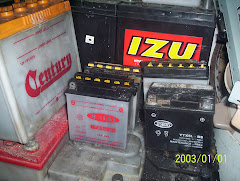A computer display monitor, usually called simply a monitor, is a piece of electrical equipment which displays viewable images generated by a computer without producing a permanent record. The word "monitor" is used in other contexts; in particular in television broadcasting, where a television picture is displayed to a high standard. A computer display device is usually either a cathode ray tube or some form of flat panel such as a TFT LCD. The monitor comprises the display device, circuitry to generate a picture from electronic signals sent by the computer, and an enclosure or case. Within the computer, either as an integral part or a plugged-in interface, there is circuitry to convert internal data to a format compatible with a monitor.
Comparison
CRT
* High contrast ratio
* High speed response
* Full range light output level control
* Large size
* Large weight
* Most produce geometric distortion
* Greater power consumption than LCD.
* Prone to moire effect at highest resolution
* Can display natively in almost any resolution
* Intolerant of damp conditions
* Small risk of implosion (due to internal vacuum) if the picture tube glass is broken
Passive LCD
* Very poor contrast ratio (eg 20:1)
* High visible noise if used in more than 8 colour mode (3 bit colour depth).
* Very slow response (moving images barely viewable)
* Some suffer horizontal & vertical ghosting
* Very small size
* Very low weight
* Very low power consumption
* Lower cost than TFT LCDs.
* Zero geometric distortion
TFT LCD
More or less all modern LCD monitors are the TFT type.
* Medium contrast ratio
* Response rates vary from one model to another, slower screens will show smearing on moving images
* Very small size
* Very low weight
* Very low power consumption
* Higher cost than Passive LCD or CRT.
* Zero geometric distortion
* LCDs of both types only have one native resolution. Displaying other resolutions requires conversion & interpolation, which often degrades image quality.
Plasma
* High operating temperature can be painful to touch
* Prone to burn-in
* No geometric distortion
* Highest cost option
* High power consumption
Comparison
CRT
* High contrast ratio
* High speed response
* Full range light output level control
* Large size
* Large weight
* Most produce geometric distortion
* Greater power consumption than LCD.
* Prone to moire effect at highest resolution
* Can display natively in almost any resolution
* Intolerant of damp conditions
* Small risk of implosion (due to internal vacuum) if the picture tube glass is broken
Passive LCD
* Very poor contrast ratio (eg 20:1)
* High visible noise if used in more than 8 colour mode (3 bit colour depth).
* Very slow response (moving images barely viewable)
* Some suffer horizontal & vertical ghosting
* Very small size
* Very low weight
* Very low power consumption
* Lower cost than TFT LCDs.
* Zero geometric distortion
TFT LCD
More or less all modern LCD monitors are the TFT type.
* Medium contrast ratio
* Response rates vary from one model to another, slower screens will show smearing on moving images
* Very small size
* Very low weight
* Very low power consumption
* Higher cost than Passive LCD or CRT.
* Zero geometric distortion
* LCDs of both types only have one native resolution. Displaying other resolutions requires conversion & interpolation, which often degrades image quality.
Plasma
* High operating temperature can be painful to touch
* Prone to burn-in
* No geometric distortion
* Highest cost option
* High power consumption














